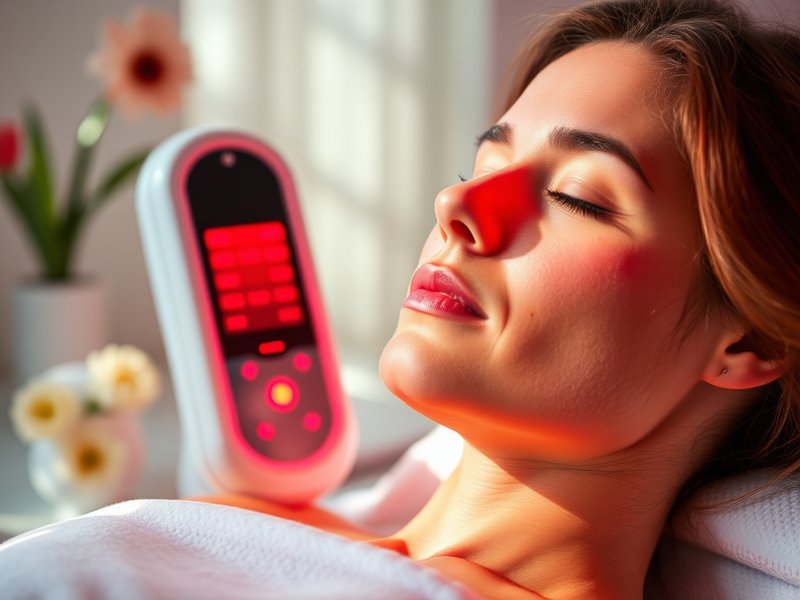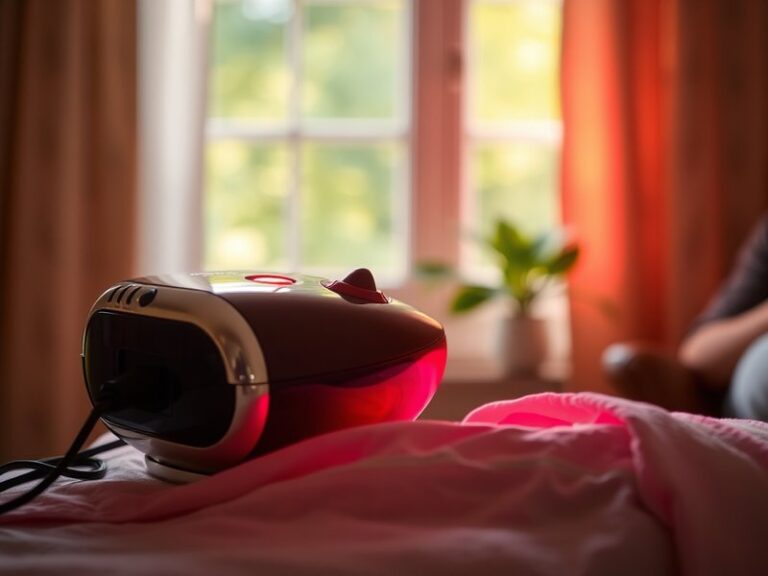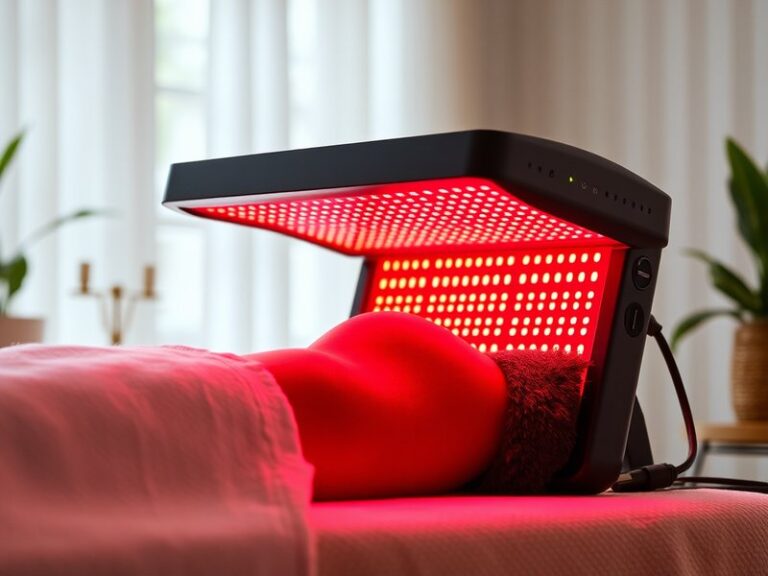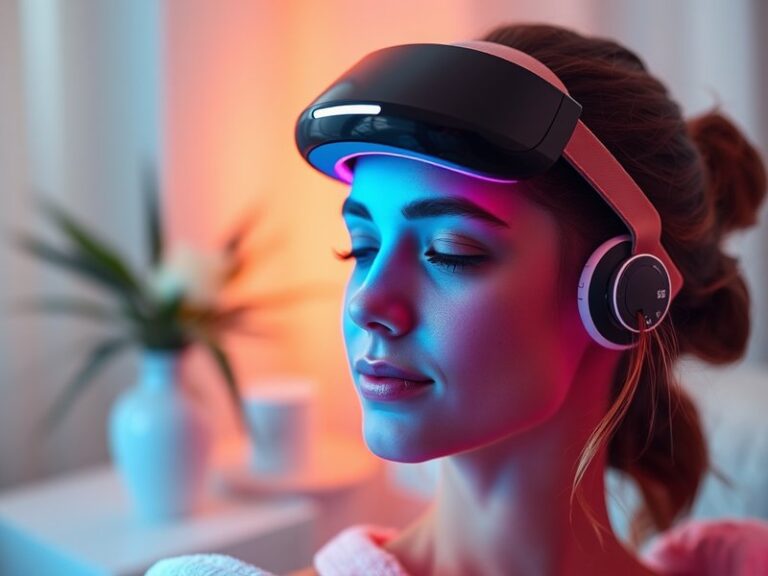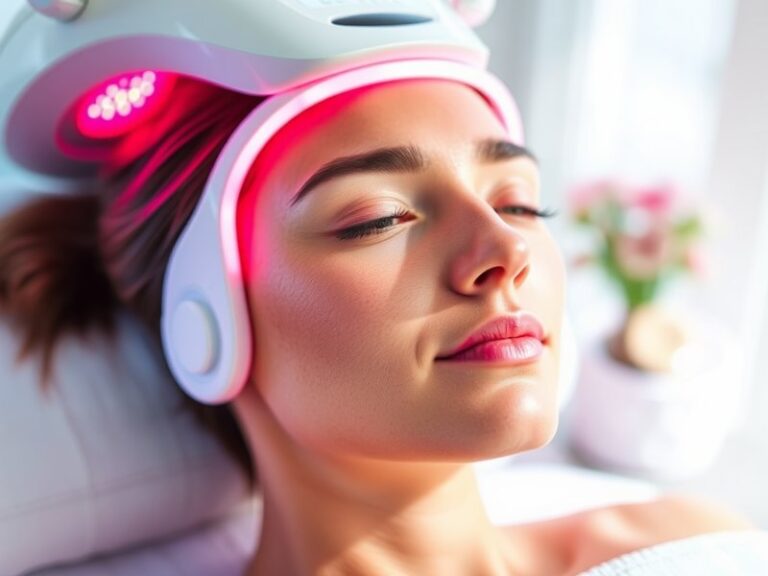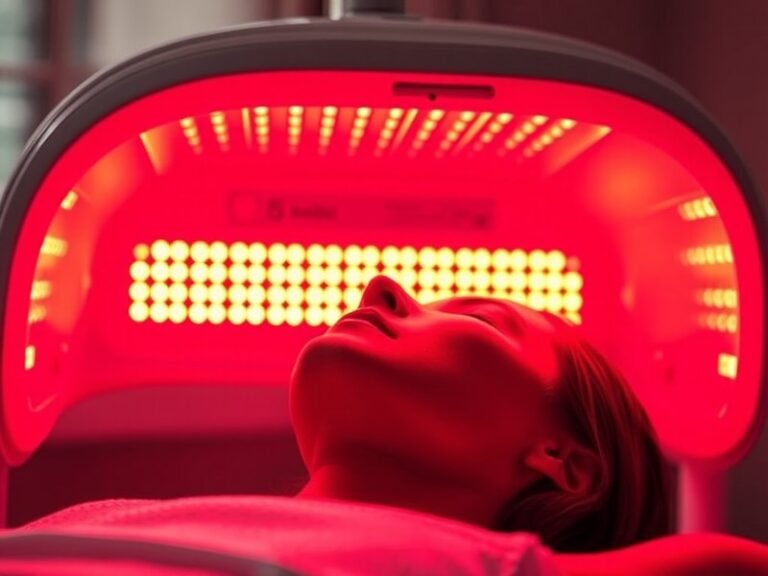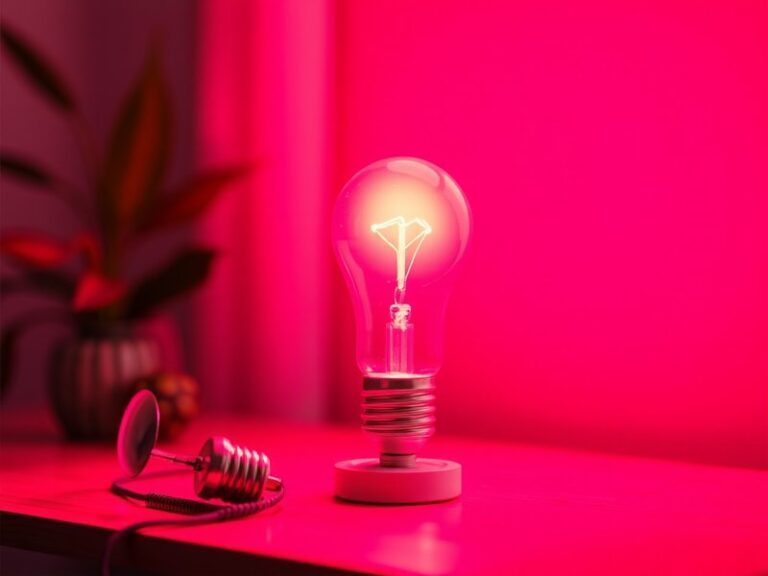Why Does Red Light Therapy Help Skin?
Why Does Red Light Therapy Help Skin?
Have you ever wondered how red light therapy achieves its remarkable effects on skin health? This innovative treatment is gaining traction for its potential benefits in skin rejuvenation and repair.
In this article, we’ll explore the science behind red light therapy, its various benefits for skin health, considerations to keep in mind before trying it, and alternatives to this therapy. By the end, you’ll have a comprehensive understanding of why red light therapy might be an excellent choice for those looking to enhance their skin.
Key Takeaways
- Red light therapy stimulates collagen production, helping reduce wrinkles and improve skin elasticity.
- It may speed up wound healing and reduce inflammation, making it beneficial for acne and other skin conditions.
- While generally safe, individual factors or skin types should be considered before undergoing treatment.
What is Red Light Therapy?
Red light therapy (RLT) is a non-invasive treatment that utilizes low wavelengths of red and near-infrared light to penetrate the skin. This process stimulates cellular activity and promotes healing and regeneration.
Originally developed for use in medical settings, RLT is increasingly used in aesthetic and wellness applications. The therapy involves exposure to red light for a specified amount of time, often delivered through specialized devices ranging from handheld units to full-body panels.
How Does Red Light Therapy Work?
When skin cells absorb the light, it triggers a biological response that increases energy production within cells. This process enhances blood circulation, reduces inflammation, and stimulates collagen and elastin production, crucial for maintaining youthful, healthy skin.
What are the Benefits of Red Light Therapy?
Understanding the numerous advantages of red light therapy can help you see why it’s becoming a popular choice for skin treatments.
Reduces Signs of Aging
RLT is effective in reducing fine lines, wrinkles, and age spots. Studies indicate that regular sessions can lead to a noticeable improvement in texture and overall appearance, making the skin look smoother and more youthful.
Improves Skin Tone and Texture
The treatment can significantly enhance skin tone by promoting even pigmentation and reducing redness or blotchiness. The result is healthier-looking, radiant skin.
Aids in Acne Treatment
Red light therapy has shown effectiveness in treating acne by reducing inflammation and killing acne-causing bacteria. Additionally, it lowers sebum production, helping to prevent future breakouts.
Enhances Wound Healing
RLT accelerates the healing process of wounds and scars, promoting faster recovery. This is particularly beneficial for post-surgical patients or individuals with chronic wounds.
Minimizes Inflammation
The therapy reduces inflammation and can provide relief for conditions such as rosacea or psoriasis, leading to calmer and clearer skin.
Is it Possible to Use Red Light Therapy at Home?
Many people wonder if they can safely perform red light therapy at home. The answer is yes! With the availability of various home-use devices, it is feasible to incorporate RLT into your skincare routine.
What are the Advantages of Home Red Light Therapy?
Utilizing red light therapy devices at home offers several benefits:
Convenience
Having the ability to perform RLT at your convenience is a significant advantage for busy individuals seeking skincare solutions without regular clinic visits.
Cost-Effective
Investing in a home device can be more economical than frequent professional sessions over time, making it a sustainable choice for ongoing skin treatments.
Privacy and Comfort
Home therapy allows for privacy, letting you relax in a familiar environment while taking care of your skin.
What are the Disadvantages of Home Red Light Therapy?
While home therapy has its perks, it’s essential to consider potential drawbacks:
Less Professional Guidance
Without professional supervision, it may be challenging to determine the most effective treatment regimen for your specific skin concerns.
Variable Device Quality
The effectiveness of devices can vary widely in quality, making it important to research and choose a reputable option.
Risk of Misuse
Inexperienced users might misuse devices by overexposing their skin, leading to irritation or other adverse effects.
What are the Things to Consider Before Starting Red Light Therapy?
Taking some precautions can enhance your experience with red light therapy. Here are critical factors to consider:
Skin Type and Sensitivity
Understanding your skin type and potential sensitivity is crucial. Consult with a dermatologist to determine if RLT is suitable for you.
Treatment Duration and Frequency
Knowing the recommended treatment duration and frequency is important to optimize results without risking overexposure.
Device Selection
Choosing the right device type and wavelength is necessary. Research product specifications to find a unit that fits your needs effectively.
What are the Alternatives to Red Light Therapy?
Exploring alternative treatments can provide additional options for improving skin health:
LED Light Therapy
Similar to RLT, blue light therapy targets acne-causing bacteria, while green light therapy helps with pigmentation issues, offering a broader treatment spectrum.
Chemical Peels
This option involves the application of acids to exfoliate and rejuvenate the skin, addressing issues like fine lines, scars, and uneven texture.
Microdermabrasion
This exfoliation technique uses tiny crystals to remove the outer layer of dead skin cells, improving skin tone and texture over time.
Topical Retinoids
Retinoids are vitamin A derivatives effective in promoting cell turnover and collagen production, making them a popular choice for anti-aging and acne treatment.
Discover our thoughts on Can Red Light Therapy Make You Ill?
Conclusion: Is it Recommended to Try Red Light Therapy?
Overall, red light therapy presents numerous benefits for skin rejuvenation, including stimulating collagen production, improving skin texture, and aiding in acne treatment. However, individuals should take personal skin characteristics and device quality into account. Consulting with a dermatologist is advisable before starting any new treatment to ensure it aligns with your skin care needs.
Frequently Asked Questions
What are the side effects of red light therapy?
Generally, red light therapy is considered safe with minimal side effects. Some individuals may experience mild irritation or redness, which typically subsides quickly.
How long does it take to see results from red light therapy?
Many individuals report visible improvements within a few weeks of regular treatments, but optimal results often require consistent sessions over a longer duration.
Can red light therapy be combined with other skin treatments?
Yes, red light therapy can enhance the effects of other treatments such as facials, chemical peels, or topical applications. Always consult a professional to create a holistic skincare plan.
How often should I get red light therapy?
Frequency can vary based on skin type and specific goals, but sessions are typically recommended 2-3 times per week for optimal results. Always follow the recommendations provided with your device or by your practitioner.
Discover Why is red light therapy tiring?
